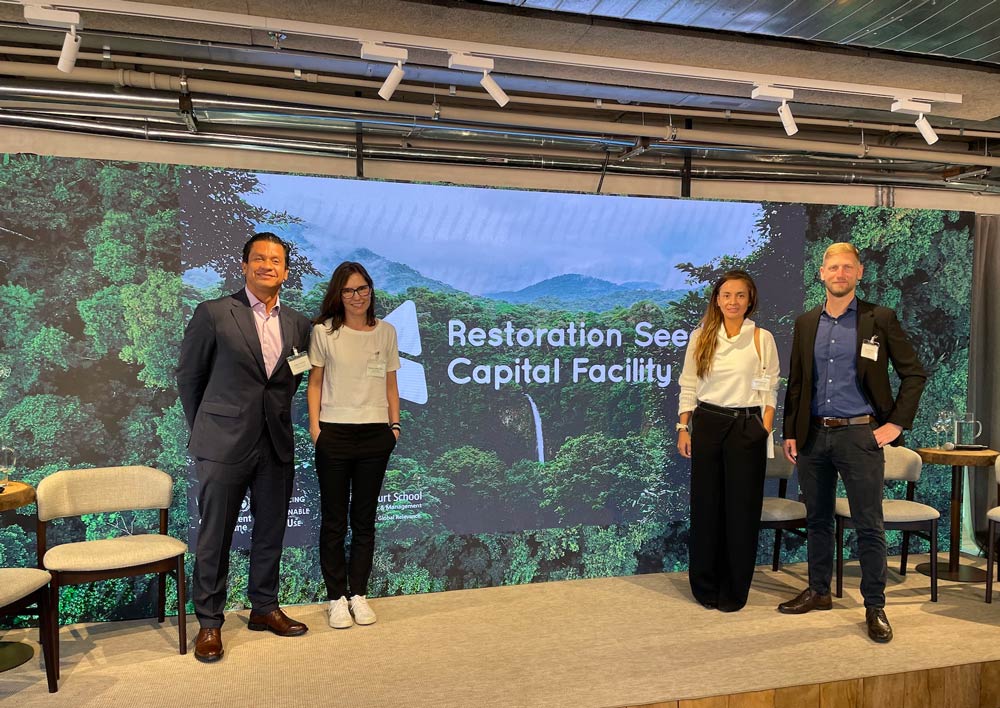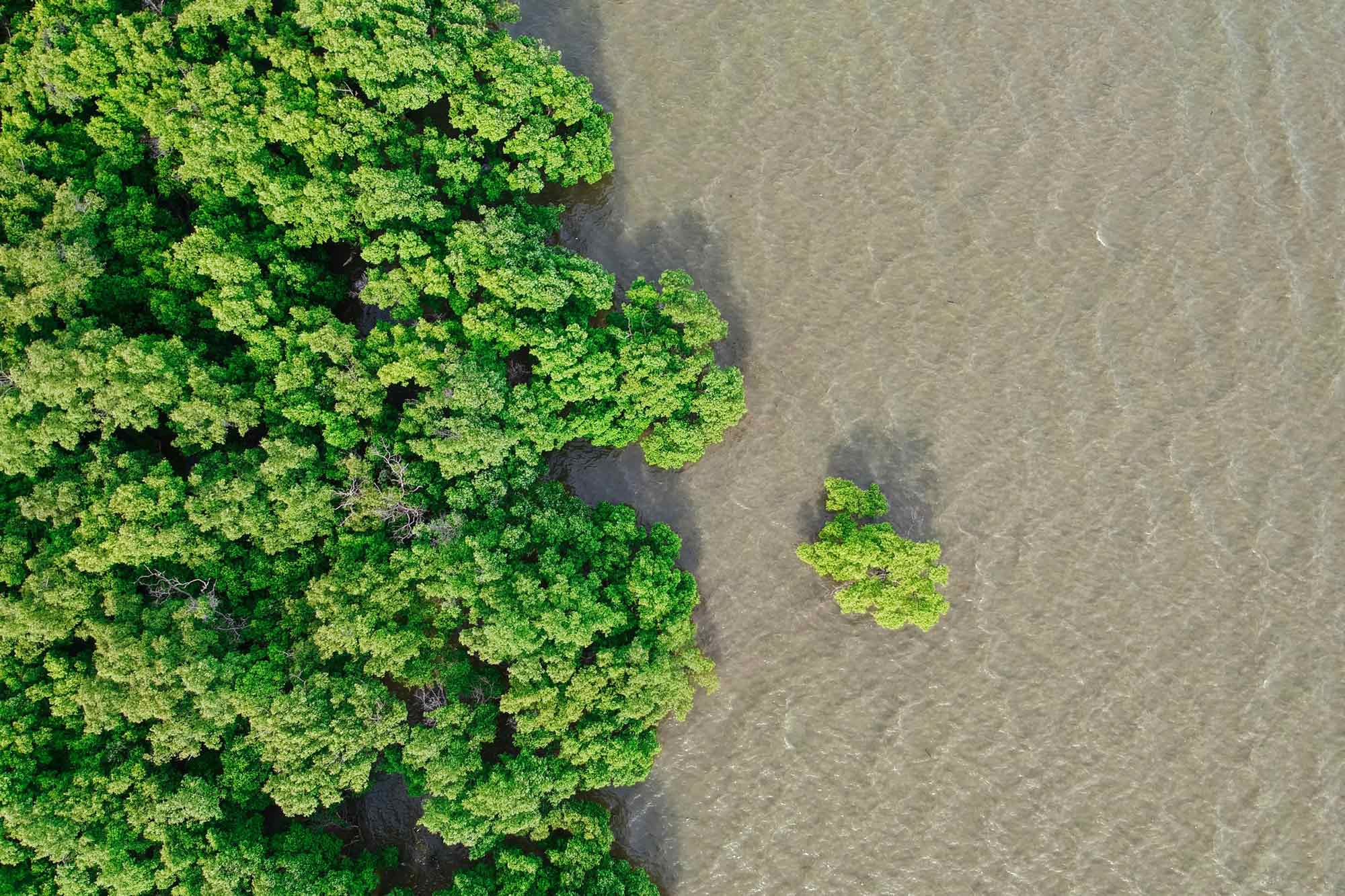Investment in nature-based solutions must double by 2025 and triple by 2030 to meet global climate and biodiversity targets according to the United Nations Environment Programme’s State of Finance for Nature Report.
Accounting for only 17% of current investment in nature-based solutions, private finance must rapidly scale up to close the nature finance gap, yet sustainable land use and sustainable commodity value chains remain an emerging topic in investment.
To address this challenge, the Restoration Seed Capital Facility team hosted an in-person Sustainable Land Use Finance Knowledge Exchange Event in São Paulo, Brazil on 7 November 2023, together with the Mobilizing Finance for Forests’ Learning, Convening and Influencing Platform (MFF LCIP), The Nature Conservancy and Innovative Finance for the Amazon, Cerrado and Chaco (TNC / IFACC) and IDH – the Sustainable Trade Initiative, with input from Latimpacto and the World Resources Institute (WRI).
RSCF’s first Regional Knowledge Exchange event brought together 60 fund managers, investors and project developers to network, exchange knowledge and share lessons learnt on establishing new restoration-focused funds, developing investment pipelines and scaling up sustainable land investments in LATAM.
Through case study presentations and facilitated peer-to-peer exchange, the event provided a closed-door forum for participants to discuss common challenges and develop shared solutions to scale up the deployment of private finance for sustainable land use and sustainable commodity value chains.

Scaling up Private Investment in Forest Landscape Restoration
Finance flows for land use remain overwhelmingly negative in their environmental impact. While there are genuine risks in the sustainable land use finance sector, a heightened sense of perceived risk prevails throughout the mainstream finance industry, which is limiting the scale of finance being mobilized for sustainable or restoration-focused investments. Impact investors are well placed to embrace these risks and drive the maturation of the sustainable land use finance market. However, fund managers continue to require targeted assistance to support the resource-intensive journey from fund origination through to first close and capital deployment.
In their presentation, RSCF partner, Campo Capital emphasized the need for patience and flexibility when fundraising and developing investment pipelines. Investor education in sustainable land use takes time: investments may not fit into a predetermined timeline and project milestones require frequent revision.
A key lesson Campo Capital learnt through their significant experience as a project operator is the need to speak both the language of capital and the language of rural producers and be able to translate the needs and expectations between the two sides of an investment.
While fundraising is time- and resource-intensive, it is only the first hurdle to capital deployment in the sector. Identifying and developing early-stage opportunities to the point of investment readiness is at least as complex and onerous.
RSCF partner, Impact Earth acknowledged the reality of developing a pipeline of investment opportunities: no opportunity they have identified has been immediately ready to receive impact investment. Each potential opportunity takes significant time to develop and each investment is completely different from one to the next. The traditional fund manager model, which is based on covering overheads and investment development costs with management fees, does not provide a sufficient envelope for the complexity of developing nature-based investments.
Restoration-focused fund managers, such as Impact Earth, continue to require external support to develop investment opportunities to maturity. RSCF’s support enables Impact Earth to fund studies, build environmental and social action plans and develop internal policies, financial models and governance structures. This support enables Impact Earth to build capacity within restoration-focused organizations so that they can continue to grow beyond the initial investment cycle.
Key Recommendations:
Following a series of workshop discussions, the event participants devised the following key recommendations* for policy makers, public finance providers, institutional investors and market leaders to accelerate the development of the sustainable land use finance sector:
- Strengthening the Policy Enabling Environment
- Land use subsidies and incentives that create negative environmental and social impacts must be reformed and redirected towards supporting sustainable land use practices.
- States have a role to play in supporting innovation within the sustainable land use finance sector and should expand policy support for pilot programs, including providing risk cover.
- Regulations should be introduced to ensure banks apply a minimum standard of finance screening to ensure investments do not lead to negative climate and biodiversity outcomes. This includes strengthening capacity development for risk modelling practices and stress testing analyses.
- Strengthening Blended Finance Support
- Blended finance providers must work together to standardize requirements to reduce complexity and time intensive processes.
- Concessional capital providers must embrace a collaborative approach and co-create financial solutions with input from all sustainable land use stakeholders from fund managers to farmers.
- Blended finance providers need to embrace the complexity of the sector and make meaningful efforts to better understand the realities on the ground in order to provide effective catalytic capital.
- Growing the Pipeline of Investable Businesses
- A database of standardized funding requirements is needed for entrepreneurs to be able to find investors at all project stages.
- A simple platform that aggregates projects seeking investment is needed for fund managers to browse potential investment opportunities.
- Expanded access to capacity building resources, increased education and dialogue between fund managers and project developers is required to determine what each party is seeking in an “investable” or “bankable” project.
- Standardizing Impact Frameworks
- Environmental, social and governance impact frameworks need to be standardized across development finance institutions, banks, institutional investors and impact funds, while continuing to contemplate the complexities of the sector.
- A commonly agreed minimum level of positive impact standards should be applied to sustainable land use investments across credit and ESG rating agencies. This can then be adopted and applied by smaller funds, companies and projects.
Next steps
RSCF will continue this series of regional knowledge exchange events to engage with the public and private finance practitioners across Latin America, Africa and Southeast Asia to identify key barriers to unlocking investment for landscape restoration and work towards shared solutions.
The key messages that emerged from the knowledge exchange discussions in Brazil will inform the development of new knowledge products and advocacy initiatives to support the sector to close the nature finance gap.
—
*Note: These recommendations were generated by the event participants and do not necessarily represent the views of MFF, FMO or the other event organising groups.





